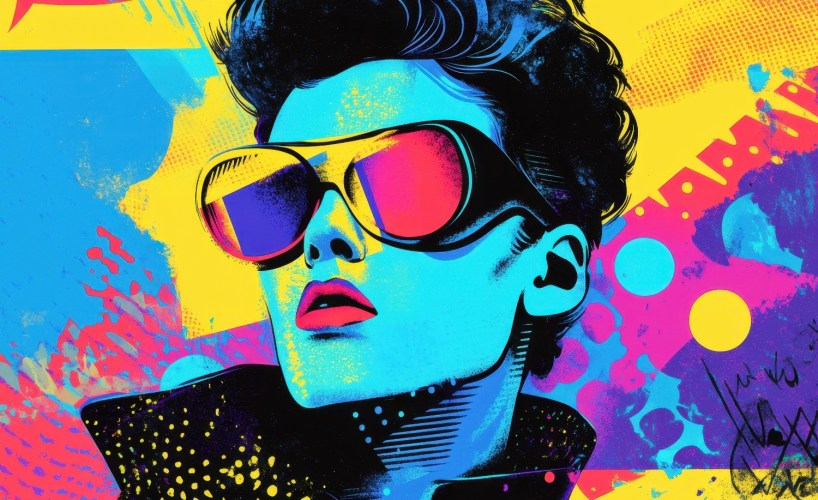Key Takeaways
What if the secret to the growth of your small and medium business (SMB) isn’t only in your product roadmap or marketing budget but in how you make people feel? Enter vibe marketing, which is all about creating that “you get me” feeling. It makes your brand that cool friend people want to hang out with — not the pushy salesperson.
For SMBs and startups, this marketing strategy is gold. Even with a limited budget, you can win hearts and grow big by being authentic, relatable, and genuinely engaging. This quick guide has everything you need to get started with vibe marketing for your startup.
What you’ll learn:
- What is vibe marketing?
- Types of vibe marketing
- How vibe marketing differs from traditional marketing
- Benefits of vibe marketing for startups
- Tools to help you get started with vibe marketing
- Common vibe marketing challenges and solutions
- Set up your vibe marketing campaign in 6 steps
- Vibe marketing done right with Salesforce
What is vibe marketing?
Vibe marketing is a strategy that focuses on creating an emotion around a brand rather than explicitly promoting specific products or features. This term emerged as a spinoff from “vibe coding,” coined by Andrej Karpathy, Co-Founder of OpenAI. Vibe coding is a programming approach where developers use artificial intelligence (AI) to generate code through natural language rather than manually writing it out line by line.
The core concept of vibe marketing lies in the same principle: coding through conversational “vibes” rather than technical syntax. Likewise, vibe marketing prioritizes creating a strong emotion around your product features, making your brand memorable.
Market your SMB with Salesforce AI
Types of vibe marketing
Let’s add “vibes” to your startup marketing strategy with these key elements:
Emotional resonance: Vibe marketing prioritizes creating content and experiences that trigger emotional responses, such as joy, nostalgia, inspiration, or humor.
For instance, let’s look at the following image? What emotions does it stir in you? Take a moment to describe its “vibe.” Understanding whether it feels relaxing, inviting, or warm directly connects to your desired brand identity.

Cultural relevance: Align your brand’s message and aesthetic with trends, subcultures, and values that are important to the target audience.
Notice the branding tactic in the image: it’s all about lavender hues, crafting a distinct future-forward, almost AI-like vibe. This strategy is cleverly designed to appeal to younger, digitally-native crowds.

Authenticity: Presenting your brand in a genuine and transparent way that feels real and relatable. Avoid overly polished or artificial messaging.
For instance, think of a vegetable vendor at a farmer’s market. What vibe do they give off? Is it a fresh, authentic, and community-oriented vibe, or a wholesome, friendly, and vibrant?

Shared values: Highlight common beliefs and principles between the brand and your audience. This fosters a sense of community and mutual understanding.
What are your first thoughts when you see the following image? Does the vibe resonate with you? If you deeply care about sustainability and social responsibility, you’d probably be intrigued to know more about this brand.

Aesthetic consistency: Have a consistent “vibe” across your social media channels, packaging, and customer service interactions. This unified approach helps build stronger brand recognition and emotional connections with audiences.
Let’s look at the following image that has uniform branding across its packaging. This approach builds brand recall value, helping customers connect with and recognize your brand instantly. This consistent visual language fosters trust, making your offerings more memorable.

How vibe marketing differs from traditional marketing
Unlike traditional marketing’s broad reach and slower campaign cycles, vibe marketing aims for deep connections and real-time adaptation.
For example, in traditional marketing, an ecommerce skincare brand would spend 3-4 weeks with separate teams conducting market research, writing product-focused copy about “clinically proven ingredients” and “dermatologist-tested formulas,” and then measure success primarily through conversion rates and cost-per-acquisition (CAC).
In vibe marketing, AI tools can rapidly create and test content that captures “self-care skin-care routine” or “skin-care morning routine” within 48 hours. It’ll track deeper engagement metrics like time spent with content, social sentiment, and brand affinity along with the conventional ecommerce metrics.
The following explains the differences between traditional and vibe marketing:

Benefits of vibe marketing for startups
Vibe marketing offers a powerful approach for startups to cut through the noise and build genuine connections. Here are some key benefits:
- Operate as a lean, productive machine: Save hours on repetitive tasks with an affordable CRM like Starter Suite.
- You’ll be the customer connection catalyst: Go beyond transactional relationships and tailor emotion-based content. An AI CRM can analyze your customers’ needs to generate content and product recommendations that genuinely resonate with them.
- Create never-ending stories for your blog: With Agentforce 360, you can build agents that can concept and run end-to-end digital marketing campaigns, and test which content best resonates with your audience.
- See your marketing results in real-time: AI CRMs with unified dashboards gather data from all your marketing channels (social media, website, and advertisements) to provide insights into engagement, sentiment analysis, and brand mentions.
- Attract and retain customers like never before: When your target audience feels more engaged with your business, they turn into your brand advocates. Tapping into customers’ feelings and values significantly improve your customer retention.
- Fuel your fanbase with community engagement: Vibe marketing positions your business like a digital creator. Authentic two-way conversations make followers feel valued and heard. Salesforce’s very own Trailblazer community is a great example. It’s home to thousands of groups and forums and you’ll get to network with likeminded entrepreneurs and marketers.
Join millions in the growing Salesforce ecosystem
Trailblazers are free to reinvent themselves, free to dream bigger.

Tools to help you get started with vibe marketing
The good news is that tools like customer relationship management (CRM) can help you get started. CRMs support your vibe marketing campaigns with the tools necessary to understand and connect with users on an emotional level.
With AI CRMs, you can get deeper insights into your marketing strategies and campaigns. These smart tools help you use vibe marketing to reach your target audience more effectively and create emotional resonance — all while staying productive.
In fact, Salesforce’s latest Small and Medium Business Trends report states that 90% of SMBs say they’re more efficient when using AI. Startups with limited resources or lean marketing teams can use AI to execute vibe marketing. Automating tasks like marketing analytics and audience segmentation allows you to focus on customer engagement.
If you’re getting excited to get going, here’s a strategic tech stack that combines automation, personalization, and creativity. Inside this CRM, you’ll have these tools that support vibe marketing:
- Content marketing tools: Agentforce 360 can help you build marketing agents that generate marketing content and social media captions, and test your audience’s reactions.
- Analytics tools: CRM analytics and Google Analytics help you measure audience growth, website traffic, and engagement. Make quick changes to your campaigns to improve engagement instead of waiting for the campaigns to end.
- Sales management: Are your vibes converting to sales? Use a CRM to track your sales pipeline and identify which campaigns are generating revenue.
- Daily operations: You’ll need tools for effective communication and better project management like Slack to bring your team and stakeholders together, while improving your collaboration
Wherever you are — just get started.
No matter where you are on your journey as a business owner, you can get started with Starter Suite for free — the CRM made for growth.

Common vibe marketing challenges and solutions
Vibe marketing, while powerful, comes with its own set of challenges. Here’s how you can overcome them:
Challenge: Measuring accurate return on investment (ROI). Traditional marketing ROI metrics often fail to capture the emotional impact and long-term value creation that vibe marketing generates. This makes it difficult to justify investments to stakeholders.
Solution: Integrate your data with a marketing CRM to get a holistic view of your campaigns and performance. Track customer journey touchpoints — from brand discovery to sentiment analysis — to know what’s generating conversions. This data integration between your CRM and marketing efforts can help you calculate your ROI weekly, monthly, and annually. It provides a complete picture of how your campaigns influence customer lifetime value (CLV), brand loyalty, and referrals.
Challenge: Offering uniform, consistent experiences across all touchpoints. With vibe marketing, you’re a one-person army doing everything, so staying consistent across your omni-channel marketing strategy is tricky. Also, when marketing doesn’t align with your product features, customers feel misled and confused. So, maintaining a consistent brand vibe across multiple channels, and customer interactions becomes increasingly complex as you scale.
Solution: Centralize marketing with a CRM for small business — your hub for storing brand guidelines, content templates, and user personas. Customize the out-of-the-box features and built-in templates to meet your business goals and save time on creating things from the scratch. This way, you’ll stay consistent and maintain vibe integrity — whether customers interact through social media, email, or phone.
Challenge: Staying relevant with marketing trends. The rapid evolution of AI tools, social media algorithms, and consumer behavior makes it challenging to keep up with best practices and emerging opportunities. But, vibe marketing is all about staying updated with the latest trends and pop culture to attract your tribe. The only way out is through continuous learning.
Solution: Get industry insights and trends from trusted research and blogs. Salesforce offers a wealth of resources and guides to keep you informed. Use these resources to learn the latest marketing trends and deliver solutions your customers will come back for. Here are a few free resources:
- Small and Medium Business Trends Report, 6th Edition
- Guide to Social Media for Small Business Marketers
- State of Marketing Report
- Trailhead for Small Business
Grow Your Small Business With AI Agents
Learn how autonomous AI can scale your small business for efficient growth in our free e-book.

Set up your vibe marketing campaign in 6 steps
All set to get started? Let’s go. Here are six steps for implementing vibe marketing:
Step 1. Define your core vibe marketing strategy
Define the specific emotions, values, and personality your brand will evoke. Focus on how customers should feel when interacting with your business, not just what you sell. This foundation will guide your content marketing, and visual decisions.
For instance, you’ll see Salesforce’s values and mascots across all our communication channels, building a strong brand recall value. These mascots are a direct representation of Salesforce’s core values and various aspects of our platform and community.
Step 2. Audit your current brand vibe
Evaluate how your brand is currently perceived across all communication channels — website, social media, phone calls — and compare this to your desired vibe or theme. Use AI tools to analyze competitor positioning, messaging, and audience engagement strategies to identify market gaps and opportunities.
Step 3. Create and develop your personalized vibe strategy
Your vibe marketing may include long-form or bite-sized content. Think of fun social media marketing, or user-generated content (UGC) to attract more eyeballs.
Use AI for small business tools to turn your defined brand vibe into compelling marketing assets. Consistently train AI on your unique voice, style, and visual identity. This creates content and campaigns that authentically represent your brand while simplifying your workflows. The result? Your content production is faster and better even as you grow.
Step 4. Gather the right tools
Use a marketing CRM to track your analytics and sales cycles. It also supports content creation with features like AI agents and email creation templates to help you get started quickly. For social media management, tools like Hootsuite or Sprout Social are great. You can schedule posts and manage interactions, ensuring your “vibe” is consistently delivered.
As video content is important for conveying vibes, tools like CapCut, or DaVinci Resolve help produce high-quality, branded video content. Staying productive and managing your projects like a pro is the cornerstone of vibe marketing. This is where Slack comes in. Simplify your workflows, keep track of your tasks and to-do lists, and even collaborate with external stakeholders through Slack Connect.
Train your team on vibe marketing principles and AI tools, making sure human oversight remains central. This blend of tech, ethical AI guidelines, and human insight creates sustainable brand experiences.
Step 5. Define metrics, measure, and optimize to scale
Move beyond traditional metrics, and establish key performance indicators (KPIs) that prioritize deep engagement (shares, saves, comments) and emotional connection. Measure sentiment analysis to understand the emotional tone of customer feedback across various platforms. Tools like Brandwatch can help you with social media monitoring, and identifying your top attention-grabbing content pieces.
Use an AI CRM to continuously monitor these emotional and behavioral indicators, identifying what’s building the authentic connection with your target audience. Test various content formats to analyze which patterns are contributing to successful vibe campaigns. Google Analytics 4 (GA4) measures engagement metrics like engaged sessions and average engagement time, which are crucial for understanding content resonance on your website.
Pro tip: Set specific KPIs for your brand’s desired vibe, like positive sentiment scores and content share rates. Use your CRM analytics to spot top-performing content, then optimize your campaigns to consistently replicate and scale that winning vibe for significant growth. AI tools can also track how your marketing campaigns are impacting your product sales and conversions.
Step 6. Join communities and forums to vibe higher
Growing your community and being a part of relevant communities are key to vibe marketing. So, actively engage in online communities and forums where your target audience gathers to stay connected with cultural trends and evolving customer sentiments. This real-time engagement provides invaluable insights into what resonates with your market.
Join Trailblazer Communities like Moment Marketer and Salesforce Starter and Pro Suites to network and collaborate with startup founders and growing businesses like yours. Remember, these connections keep you ahead of emerging trends and tactics.
What can you do with a CRM built to reach more prospects?
Automate your marketing campaigns with a CRM built to grow. It all starts with Starter Suite.

Vibe marketing done right with Salesforce
Vibe marketing is the secret sauce to making some noise (the good kind!). And it isn’t just about creating emotional connections — it’s about building lasting relationships that generate real business results. With Salesforce, you get all the required tools to create and monitor your efforts and brand experiences. And the best part? You can make your marketing memorable.
Start your journey with a free trial of Starter Suite today. Looking for more customization? Explore Pro Suite. Already a Salesforce customer? Activate Foundations and try out Agentforce 360 today.
AI supported the writers and editors who created this article.
Frequently Asked Questions (FAQs)
Vibe marketing is a strategy that focuses on creating and maintaining a positive and engaging brand persona to attract and retain customers. It involves using emotional content, community building, and authentic interactions to build a loyal customer base.
Vibe marketing is important for startups because it creates a strong brand identity and emotional connection with customers. This leads to increased customer loyalty, positive word-of-mouth marketing, and a more engaged community — all of which are essential for sustainable growth.
Effective vibe marketing tactics for startups include hosting events, creating user-generated content (UGC), and collaborating with influencers. Use storytelling to share your brand’s mission and values. These tactics help build a strong emotional connection with the audience.
Vibe marketing differs from traditional marketing by prioritizing emotional and experiential connections over direct sales pitches. While traditional marketing emphasizes what you sell, vibe marketing focuses on how customers feel when they interact with your brand.
You should track metrics like engagement rates (likes, shares, comments), community growth (followers, paid subscriptions), customer satisfaction scores, and referral rates. These metrics can measure your vibe marketing efforts and offer insights into future strategies.




































